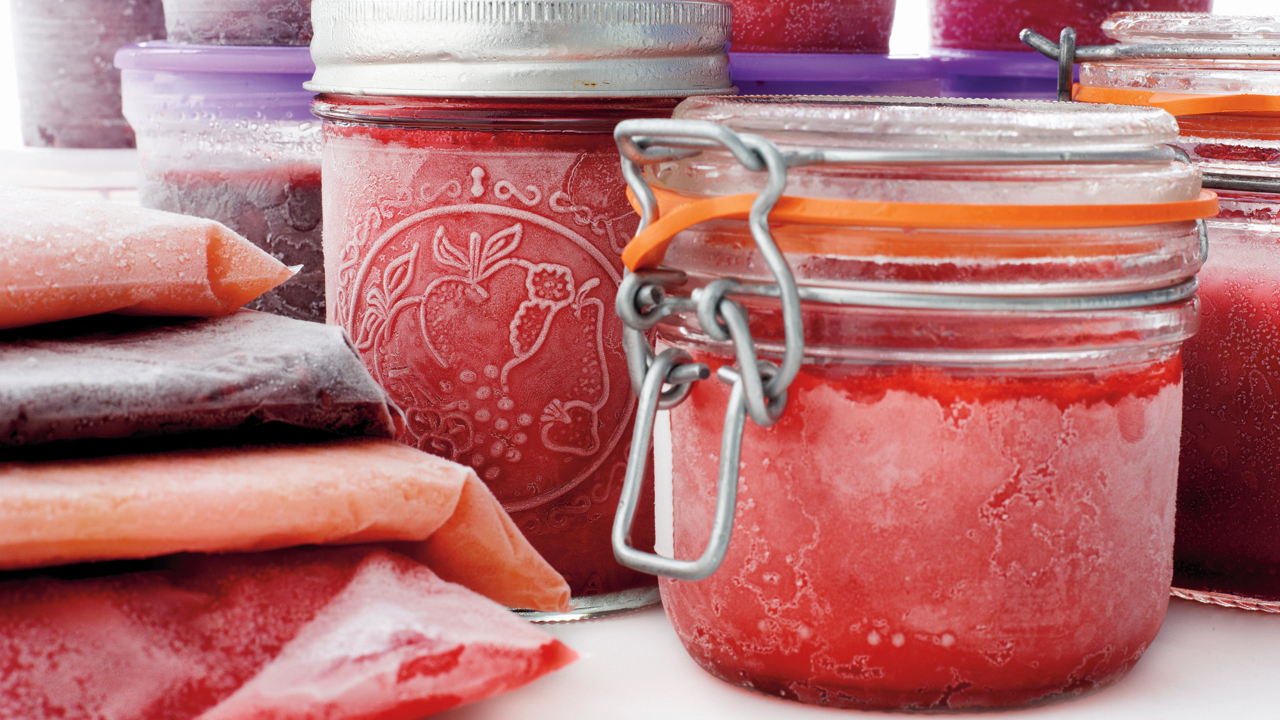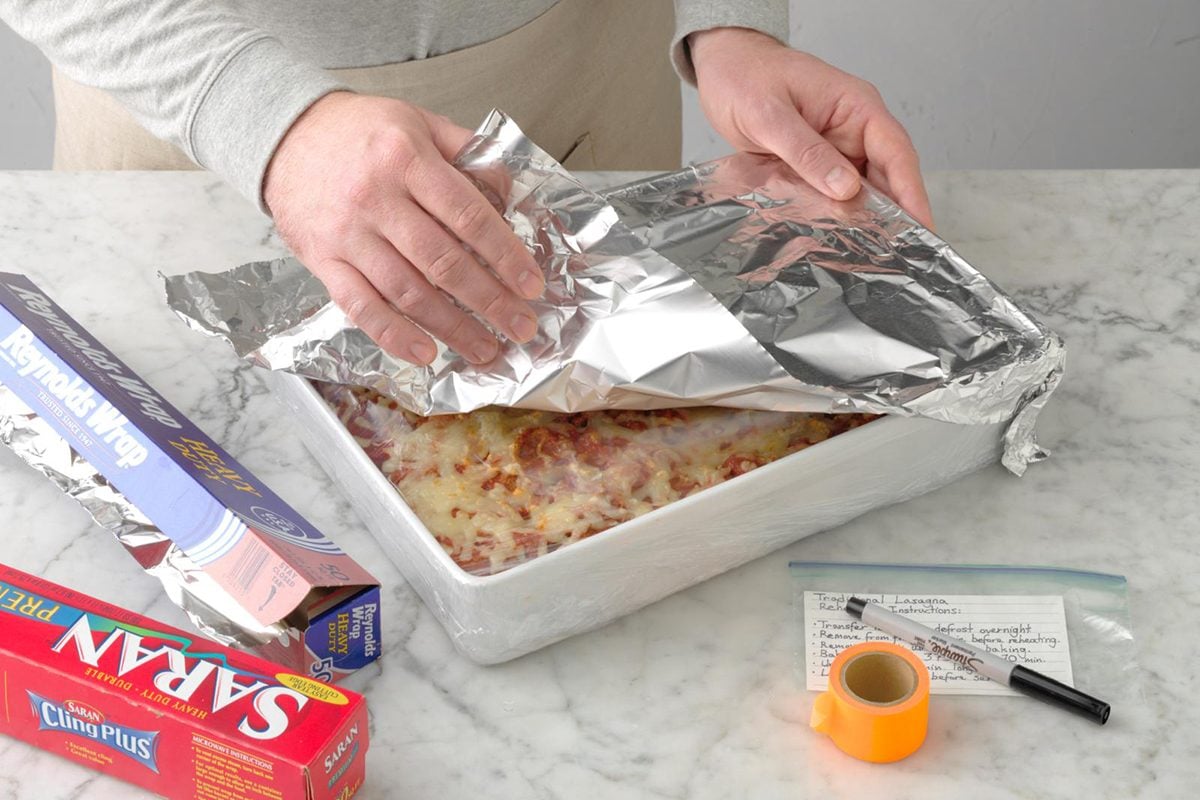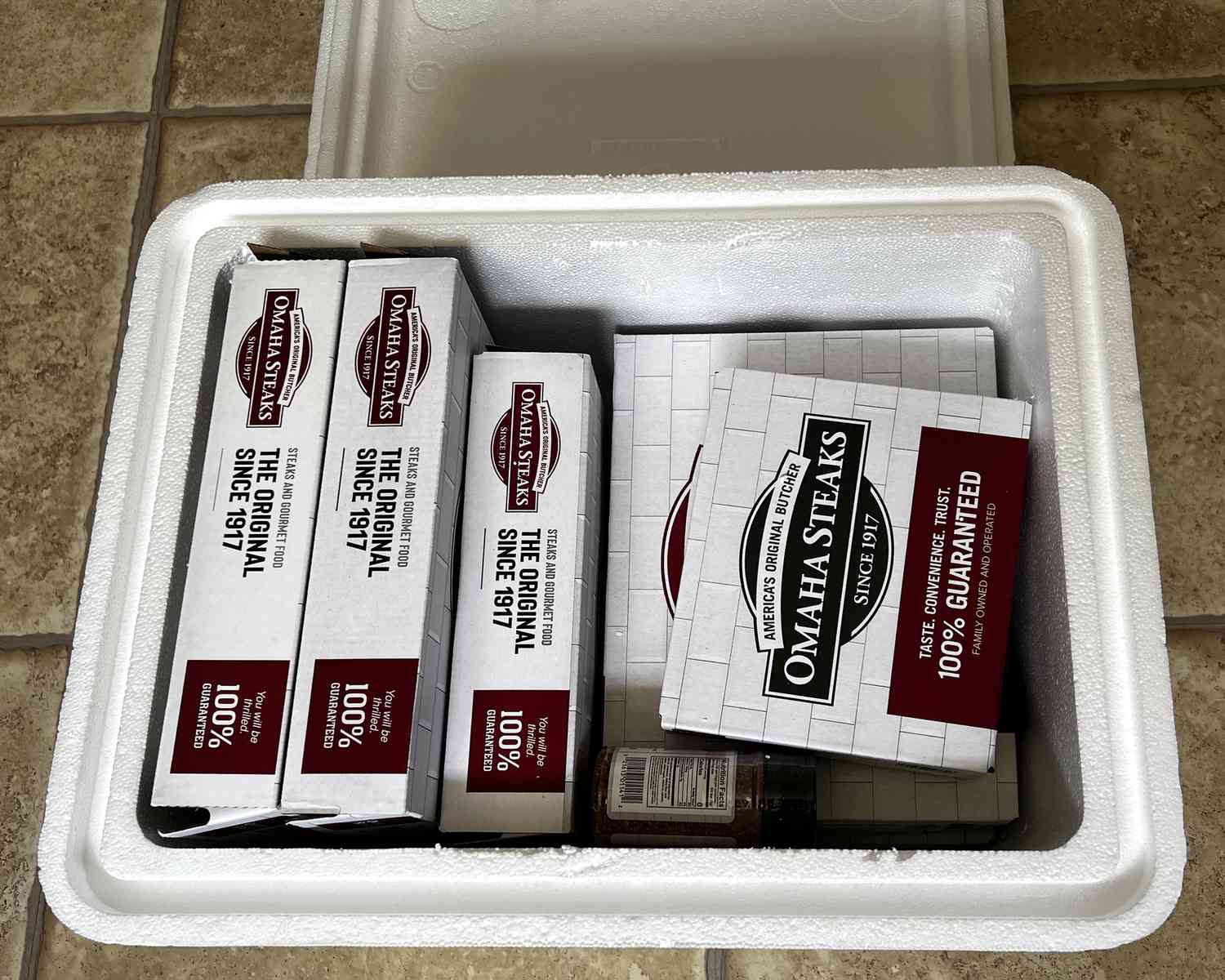Home>Articles>How Long Does Italian Sausage Last In The Freezer


Articles
How Long Does Italian Sausage Last In The Freezer
Modified: February 28, 2024
Discover how long Italian sausage can last in the freezer with this informative article. Learn proper storage techniques and tips to maximize its shelf life.
(Many of the links in this article redirect to a specific reviewed product. Your purchase of these products through affiliate links helps to generate commission for Storables.com, at no extra cost. Learn more)
Introduction
Italian sausage is a popular meat product known for its rich flavor and versatility in various dishes. Whether you have purchased a large batch of Italian sausage or simply have leftovers from a previous meal, it’s important to know how to properly store it in the freezer to maintain its quality and extend its shelf life. Freezing Italian sausage is a convenient way to preserve it for future use, ensuring that you always have a delicious ingredient on hand. In this article, we will explore the factors affecting the shelf life of Italian sausage in the freezer, proper storage techniques, tips for extending its freezer life, signs of spoilage, safe consumption guidelines, and alternative uses for frozen Italian sausage.
Key Takeaways:
- Proper storage, including airtight packaging, portioning, and labeling, is crucial for preserving the quality of frozen Italian sausage and maximizing its shelf life in the freezer.
- Safe consumption practices, such as thorough cooking, proper thawing, and vigilant inspection for signs of spoilage, ensure that frozen Italian sausage can be enjoyed with confidence and peace of mind.
Read more: How Long Will Sausage Last In The Freezer
Factors Affecting the Shelf Life of Italian Sausage in the Freezer
Several factors can influence the shelf life of Italian sausage when stored in the freezer. Understanding these factors can help you make informed decisions about the storage and consumption of your frozen sausage.
Quality of the Sausage: The quality of the Italian sausage before freezing plays a significant role in its shelf life. Fresh sausages with high-quality ingredients and proper handling are more likely to have a longer freezer life compared to sausages that are nearing their expiration date or have been mishandled.
Freezer Temperature: The temperature of your freezer is crucial in determining the shelf life of Italian sausage. It is recommended to set your freezer temperature to 0°F (-18°C) or lower. Maintaining a consistently cold temperature will slow down the growth of bacteria and prevent freezer burn, preserving the flavor and texture of the sausage.
Packaging: The type of packaging used to store the Italian sausage can affect its shelf life. It is best to use airtight packaging such as freezer-safe plastic bags or containers to prevent freezer burn and to protect the sausage from exposure to air and moisture.
Storage Time: The length of time Italian sausage spends in the freezer directly impacts its quality. While Italian sausage can be stored in the freezer for several months, it is advisable to consume it within three to four months for the best taste and texture.
Thawing and Refreezing: The process of thawing and refreezing Italian sausage can impact its quality. It is recommended to thaw the sausage in the refrigerator rather than at room temperature to minimize the risk of bacterial growth. Refreezing thawed sausage may affect its texture and overall quality, so it is best to defrost only the amount you plan to use.
By taking these factors into consideration, you can ensure the optimum preservation of Italian sausage in the freezer, maximizing its shelf life and maintaining its deliciousness for future consumption.
Proper Storage Techniques for Italian Sausage in the Freezer
Proper storage techniques are essential to maintain the quality and longevity of Italian sausage in the freezer. Following these techniques will help prevent freezer burn, maintain flavor, and ensure safe consumption.
1. Packaging: Use airtight packaging to protect the Italian sausage from exposure to air and moisture. Freezer-safe plastic bags or containers are ideal for this purpose. Ensure that the packaging is sealed tightly to prevent any air from entering.
2. Portioning: Divide the Italian sausage into individual or family-sized portions before freezing. This will allow you to thaw only the amount you need, instead of having to thaw the entire package.
3. Labeling: Clearly label the packaging with the date of freezing. This will help you keep track of the sausage’s storage time and ensure you use the oldest ones first.
4. Freezing Method: Lay the Italian sausage flat in the packaging to maximize space utilization and ensure even freezing. If using freezer bags, remove as much air as possible before sealing.
5. Temperature Control: Place the packaged Italian sausage in the coldest part of the freezer, away from the door and other items that can cause temperature fluctuations. Keep the freezer temperature consistently at or below 0°F (-18°C) to maintain the sausage’s quality.
6. Avoid Stacking: Avoid stacking multiple packages of Italian sausage on top of each other before they are frozen solid. This can result in uneven freezing and may cause the sausages to stick together.
7. Proper Handling: When taking Italian sausage out of the freezer, handle it with clean hands and avoid cross-contamination with other foods. Thaw the sausage in the refrigerator to minimize the risk of bacterial growth.
By following these proper storage techniques, you can ensure that your Italian sausage remains fresh, flavorful, and safe for consumption throughout its freezer life.
Tips for Extending the Freezer Life of Italian Sausage
If you want to extend the freezer life of Italian sausage and ensure its optimal quality, consider implementing these helpful tips:
1. Fresh Sausage: Purchase fresh Italian sausage that is within its expiration date. The fresher the sausage, the longer it will retain its quality in the freezer.
2. Vacuum Sealing: Consider vacuum sealing Italian sausages before freezing them. Vacuum-sealed sausages have reduced exposure to air, which helps prevent freezer burn and prolongs their freezer life.
3. Freezing in Recipe Portions: If you often use Italian sausage in specific recipes, freeze them in portion sizes commonly required for those dishes. This way, you can easily grab the right amount without having to defrost the entire package.
4. Flash-Freezing: For bulk purchases or larger quantities of Italian sausage, utilize the flash-freezing method. Lay the sausages in a single layer on a baking sheet and place them in the freezer for about an hour. Once partially frozen, transfer them to airtight containers or freezer bags for long-term storage.
5. Proper Labeling: Always label your packages of Italian sausage with the date of freezing. This will help you keep track of their storage time and ensure you use the oldest sausages first.
6. FIFO Method: Implement the “First In, First Out” (FIFO) method when it comes to using your frozen Italian sausage. Consume the sausages in the order they were frozen to avoid any potential spoilage from long-term storage.
7. Avoid Frequent Thawing and Refreezing: Thawing and refreezing Italian sausage can negatively impact its quality. Try to thaw only the amount you need and refrain from refreezing previously thawed sausages.
8. Keep the Freezer Well-Organized: Maintain an organized freezer by storing Italian sausage in a dedicated section. This ensures easy access and prevents the sausages from getting misplaced or forgotten.
By implementing these tips, you can extend the freezer life of your Italian sausage and enjoy its flavorful taste for a longer period.
Italian sausage can last in the freezer for up to 1-2 months if properly stored in an airtight container or freezer bag. Be sure to label with the date to keep track of its freshness.
Signs of Spoiled Italian Sausage in the Freezer
It is important to be able to identify the signs of spoiled Italian sausage in the freezer to ensure your safety and avoid consuming spoiled food. Here are some key indicators that the sausage may have gone bad:
1. Foul Odor: One of the first signs of spoilage is a strong, unpleasant odor coming from the sausage. If the smell is rancid, foul, or significantly different from the normal scent of Italian sausage, it is likely spoiled.
2. Discoloration: Examine the color of the sausage. If you notice any significant changes, such as a greenish or grayish hue, it is indicative of spoilage. Fresh Italian sausage should have a vibrant and consistent color.
3. Texture Changes: Spoiled Italian sausage may exhibit changes in texture. It can become slimy, mushy, or excessively dry. If the texture feels off or inconsistent with fresh sausage, it is best to discard it.
4. Ice Crystals: Inspect the surface of the sausage for the presence of large ice crystals or freezer burn. While small ice crystals are normal, excessive ice formation can indicate poor packaging or prolonged storage, potentially affecting the quality of the sausage.
5. Mold Growth: The presence of mold on the surface of the sausage is a clear indication of spoilage. Mold can appear as green, white, or black spots. If you notice any mold growth, it is crucial to discard the sausage immediately.
6. Unpleasant Taste: If the Italian sausage tastes strange, bitter, or unpleasant, it is likely spoiled. Trust your taste buds and do not consume the sausage if it does not taste right.
7. Signs of Freezer Burn: Freezer burn can occur when the sausage is exposed to air in the freezer for extended periods. Look for dry, discolored patches or a leathery texture on the surface of the sausage. While freezer burn doesn’t necessarily mean the sausage is spoiled, it can affect the taste and texture.
If you notice any of these signs, it is crucial to err on the side of caution and discard the spoiled Italian sausage. Consuming spoiled food can lead to foodborne illnesses and should be avoided to ensure your safety.
Read more: What Kind Of Seeds Are In Italian Sausage
Safe Consumption of Frozen Italian Sausage
When it comes to enjoying frozen Italian sausage, it’s important to follow proper guidelines to ensure safe consumption. By practicing food safety measures, you can minimize the risk of foodborne illnesses and enjoy your sausage with confidence. Here are some tips for safely consuming frozen Italian sausage:
1. Thawing: Thaw Italian sausage safely by transferring it from the freezer to the refrigerator. Allow it to thaw slowly and evenly in the refrigerator overnight or for a few hours. Thawing sausage at room temperature can lead to bacterial growth and should be avoided.
2. Cook Thoroughly: It is essential to cook Italian sausage thoroughly before consuming it. This not only enhances the flavor but also helps kill any bacteria that may be present. Ensure that the sausage is cooked to an internal temperature of 160°F (71°C) to guarantee food safety.
3. Cross-Contamination: Prevent cross-contamination by handling frozen Italian sausage with clean hands and separate utensils. Avoid contact with other raw or cooked foods to prevent the spread of harmful bacteria.
4. Proper Storage: After thawing, if you have leftover cooked Italian sausage, store it promptly in the refrigerator. Consume the leftovers within 3-4 days to maintain their quality and reduce the risk of bacterial contamination.
5. Reheating: If you have previously cooked Italian sausage that has been frozen, ensure it is reheated properly before consuming. Reheat the sausage to an internal temperature of 165°F (74°C) to eliminate any potential bacteria that may have formed during storage.
6. Use-by Dates: Pay attention to the use-by dates on the packaging of the Italian sausage. Consume the sausage before the indicated date to ensure its quality and safety.
7. Smell and Appearance: Before cooking or consuming frozen Italian sausage, check for any unusual or off-putting smells, changes in color, or signs of spoilage. If in doubt, it is best to discard the sausage to avoid any potential risks.
By following these guidelines, you can safely enjoy your frozen Italian sausage, ensuring both taste and peace of mind.
Alternative Uses for Frozen Italian Sausage
While frozen Italian sausage is commonly used in traditional dishes like pastas, pizzas, and sandwiches, there are plenty of unique and delicious alternative ways to incorporate it into your meals. Here are some creative ideas for utilizing frozen Italian sausage:
1. Breakfast Skillet: Cook the crumbled Italian sausage with diced potatoes, onions, and bell peppers for a flavorful breakfast skillet. Top it off with eggs and cheese for a hearty and satisfying morning meal.
2. Soup and Stews: Add sliced or crumbled Italian sausage to your favorite soups and stews to infuse them with rich flavors. It works particularly well in hearty soups like minestrone or bean soups.
3. Casseroles: Incorporate frozen Italian sausage into casseroles for a savory twist. It pairs well with ingredients like potatoes, cheese, vegetables, and pasta, creating a flavorful and filling dish.
4. Stir-Fries: Sauté sliced Italian sausage with an array of colorful vegetables, such as bell peppers, carrots, and broccoli, for a quick and flavorful stir-fry. Add your favorite sauces and serve alongside rice or noodles.
5. Sheet Pan Dinners: Create a convenient and tasty sheet pan dinner by roasting Italian sausage with a variety of vegetables like potatoes, onions, and Brussels sprouts. It’s an easy and satisfying meal with minimal cleanup.
6. Pizza Toppings: Slice the frozen Italian sausage and use it as a delicious topping for homemade or store-bought pizzas. Combine it with other ingredients like cheese, tomatoes, and herbs for a flavorful pizza night.
7. Quiches and Frittatas: Incorporate crumbled Italian sausage into quiches or frittatas for a protein-packed and savory breakfast or brunch option. Combine it with vegetables, cheese, and eggs for a delicious and filling dish.
8. Sausage Stuffing: Make a flavorful stuffing for poultry, such as chicken or turkey, by combining Italian sausage with breadcrumbs, herbs, and vegetables. It adds a robust and savory element to your holiday or special occasion meals.
9. Sausage Rolls or Hand Pies: Create homemade sausage rolls or hand pies by wrapping frozen Italian sausage in puff pastry or pie dough. Bake them until golden brown for a delicious grab-and-go snack or appetizer.
10. Sausage and Vegetable Skewers: Thread sliced Italian sausage, along with pieces of bell peppers, onions, and mushrooms, onto skewers. Grill or broil them for a flavorful and easy-to-make meal.
These alternative uses for frozen Italian sausage provide a variety of ways to enjoy this versatile ingredient in exciting and unexpected dishes. Get creative and experiment with different flavors and preparations to elevate your meals.
Conclusion
Properly storing and utilizing frozen Italian sausage is essential for maintaining its quality and ensuring safe consumption. By understanding the factors that affect its shelf life, implementing proper storage techniques, and following food safety guidelines, you can enjoy delicious Italian sausage for an extended period of time without compromising on taste or safety.
Factors such as the quality of the sausage, freezer temperature, packaging, storage time, and thawing methods all play a role in the preservation of Italian sausage in the freezer. By paying attention to these factors, you can maximize the sausage’s freezer life and maintain its flavor and texture.
Proper storage techniques, including using airtight packaging, portioning, labeling, and maintaining a consistent freezer temperature, are essential for preserving the quality of Italian sausage. Following these techniques helps prevent freezer burn, maintain freshness, and simplify meal preparation by allowing you to easily thaw the desired amount of sausage.
Furthermore, knowing the signs of spoiled Italian sausage is crucial for identifying any potential health risks. Foul odor, discoloration, texture changes, mold growth, and freezer burn are clear indicators that the sausage may be spoiled and should be discarded to ensure safety.
When consuming frozen Italian sausage, it’s important to follow safe handling practices. Thawing sausage in the refrigerator, cooking it thoroughly, avoiding cross-contamination, and reheating leftover sausages properly are all critical to prevent foodborne illnesses.
Lastly, consider exploring alternative uses for frozen Italian sausage to broaden your culinary horizons. From breakfast skillets and soups to casseroles and stir-fries, there are countless ways to incorporate this flavorful ingredient into your meals.
In conclusion, by understanding the factors affecting shelf life, implementing proper storage techniques, following safe consumption guidelines, and exploring creative applications, you can enjoy frozen Italian sausage with confidence, knowing that you are maximizing its quality and safety.
Frequently Asked Questions about How Long Does Italian Sausage Last In The Freezer
Was this page helpful?
At Storables.com, we guarantee accurate and reliable information. Our content, validated by Expert Board Contributors, is crafted following stringent Editorial Policies. We're committed to providing you with well-researched, expert-backed insights for all your informational needs.















0 thoughts on “How Long Does Italian Sausage Last In The Freezer”